
Visual Art as a Platform for Social Commentary
Working in an art museum, I’m often asked who my favorite artist is. As a self-proclaimed Warhol aficionado, I often instinctively answer, obviously Andy – and with good reason! For half a century, Warhol’s work has offered a fascinating social commentary, pulling from a well of found imagery from the media and pop culture.
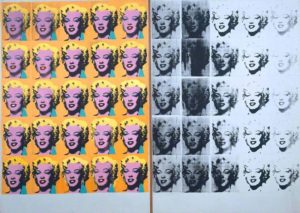 |
|
Marilyn Diptych, 1962 by Andy Warhol via the Tate Modern
|
While he’s known for his repetitious soup cans and iconic Marilyns, his oeuvre has long elicited thought, discussion, and even change regarding then “taboo” topics like gender equality, human rights, the civil rights movement, and the evils of consumerism. Many associate Warhol with bright canvases of movie stars and Campbell’s soup but, there is a whole area of his work that dealt with the darker aspects of American culture – death, disasters, crime, and violence. Works like Birmingham Race Riot (1964) and Thirteen Most Wanted Men (1964), brought to the forefront parts of American society often overlooked. In fact, the Thirteen Most Wanted Men series, deemed too risqué, was censored shortly after it appeared on the façade of the New York State Pavilion. Through explorations and studies of newspaper clippings dealing with these more deviant themes in culture, Warhol was able to bring about discussion and change. He paved the way for the Pop Movement and the artists that followed, showing that through honest inquiry in the form of visual art, we can begin to foster the kinds of conversations that may bring about social change for the betterment of the world community.
Left: Birmingham Race Riots, 1964 by Andy Warhol via the Tate Modern,
Like Warhol, internationally known contemporary artists Banksy and Ai Weiwei use their art as a vehicle for asking these same kinds of questions that promote social change – drawing attention to the not so beautiful realities of society like injustice, censorship, and the inequalities stemming from capitalist culture. These two widely-known artists are just a small percentage of artistic activists currently packaging their ideas in the beautiful and digestible format of visual art. Here in Chicago, artists Theaster Gates and Dan Peterman are also creating bodies of work that promote healthy conversation around social change, with hopes of revitalizing the communities in which they live.
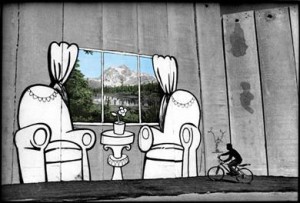 |
|
Banksy’s West Bank Barrier, Palestine, 2005by Banksy via artist’s website
|
Chicago artist, Dan Peterman is one of my favorite contemporary artists working locally in Chicago. If you’ve ever sat upon the 100-foot-long Running Table (2009) in Millennium Park or cut a rug on the Summer Dance dance floor, you’ve interacted with his work. Running Table and the dance floor in Grant Park are beautiful useful objects – and they are constructed entirely of recycled plastic. Peterman’s art, though quite different from Warhol, Bansky, and Ai Weiwei, is still at the core of the idea that asking questions through art can be a means of promoting social change. Much of his work deals with answering the pressing question of our current environmental crises, finding creative, utilitarian, and beautiful solutions to the basic problem of properly disposing of non-biodegradable waste, especially plastic. To quote his artist’s bio, “Peterman explores networks of recycled, or discarded materials to produce starkly minimal works that function interchangeably as stockpiles, sculpture, functional objects, and critiques of environmental waste and neglect.” He has found ways of artfully incorporating discarded materials and reworking them into new and useful objects that enrich and enhance our lives, while also getting us to think more consciously about the earth we live on. In addition to his work as an artist, Peterman is a founder and current board member of the Experimental Station, a Chicago-based incubator of small-scale enterprise and cultural projects.
Left: Detail of Summer Dance Floor, Right: Summer Dance Floor in action via artist’s website
 |
| Sandy Caribou |
Sandy works at the Art Institute of Chicago. She has been a blogger for nearly a decade, and has been writing about art since 2010. Follow her on twitter @sandycaribou, and read her blog at www.edieandandy.com
 |
| Contributors powered by Chicago Blogger Network |



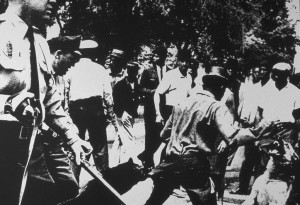
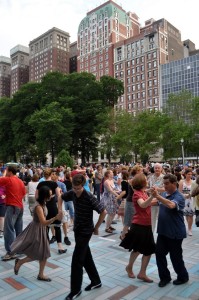


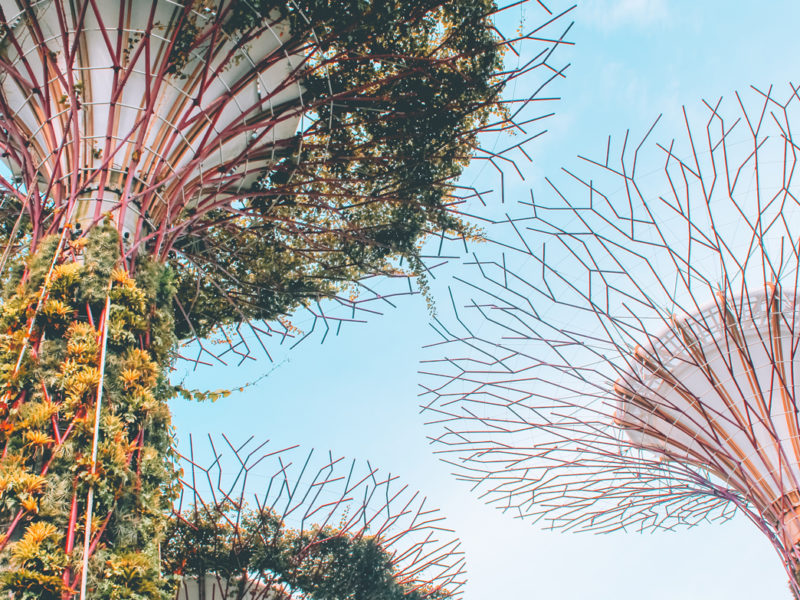
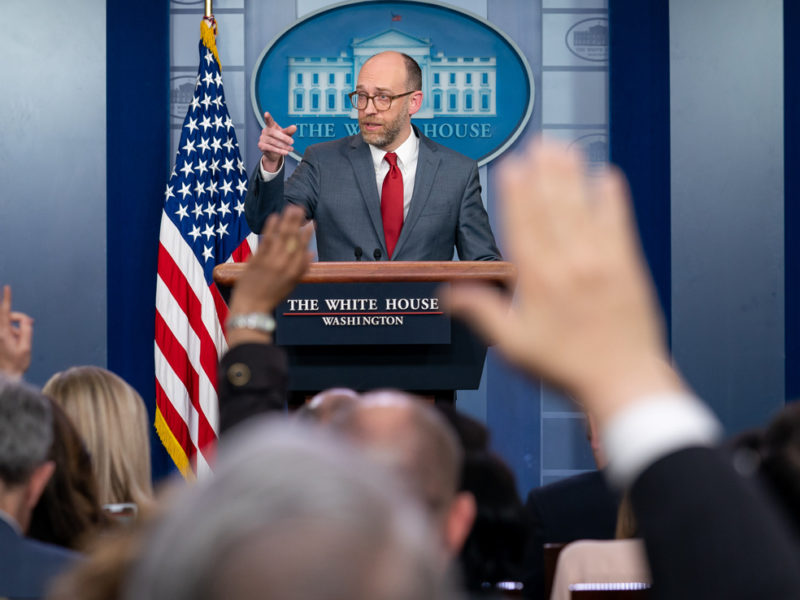
Molly
Can’t wait to check out Peterman’s work up close and personal when I go to summer dance later this month. Looking forward to sharing YOUR knowledge when I do! Great post.
Matt Maldre
I really like how you thread Dan Peterman, Banksy, and Andy Warhol together. I’d be curious if Christo would be able to woven into this group. Although Christo isn’t as much of a social change guy. He’s more of a social asethetics guy, but conversations do result from Christo’s work that give people new vision of their surroundings, so perhaps he is akin with them.
How about Warhol’s “buddy” Joseph Beuys? He’d fit int that trio very well.
Great great article, I’m gonna go through your blog to find any art posts.
Sandy Guttman
Matt,
Thanks so much for the feedback! I know I already acknowledged you via twitter, but it really makes me smile hearing from someone who knows their artists! Christo definitely crossed my mind, in the sense that he is an international artist, working on large scale, incredibly visible, powerful projects – but part of me becomes so overwhelmed by his work, not only by its grandiose scale, but also the lofty intellectual conceptual background of his work, that I find him to be in a different sort of category than the crew I picked. Also, for the record, I had a word limit ;), lord knows I could go on and on about art!
Do you have a blog, or links? I’d love to see some of your writing.
Thanks again!
Sandy
Sandy Guttman
Tim!!
I am so excited to see a friendly face on my post! I remember that the Knox art department brought Peterman to campus my junior or senior year. I found his talk to be thoughtful, charming, funny, and incredibly moving. He had a project that involved turning the contaminated liquid milk of Wisconsin cows into solid blocks of cheese so that it could be properly disposed of, and the creative and practical application of a process like that was so incredibly profound to me. His work is useful, clever, and definitely has an impact on his community. He is such a great thinker, and I am honestly a tad jealous that you were able to work closely with him.
Send my love to the great minds at Knox and Professor Gilbert!
xoxo,
Sandy